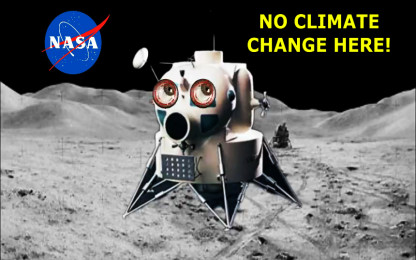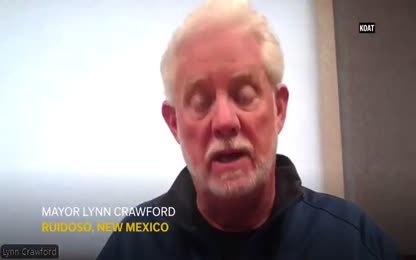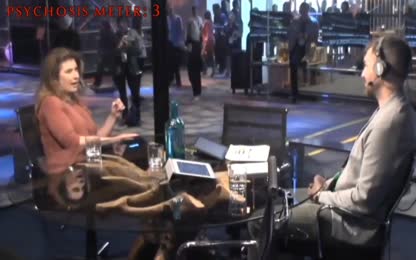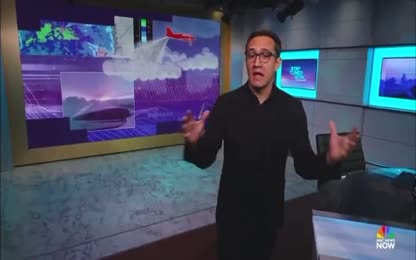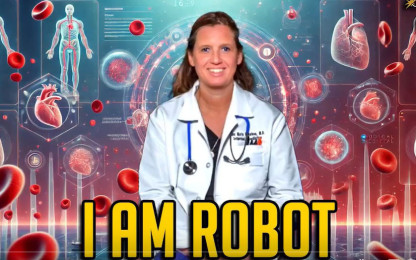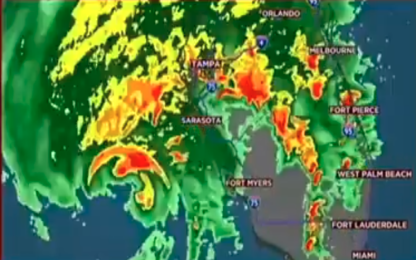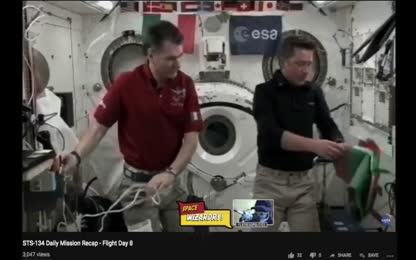Advertisement
Climate Scientist Explains How NASA Uses Chemtrails
Doug Rowland, PhD is a NASA scientist who is heard explaining how and why different types of CHEMTRAILS appear in the sky. The recorded phone call reveals that scientists use the term "chemtrails" without reservation in order to speak in abbreviated terms.
- Category: Pursuit of Truth
- Duration: 09:57
- Date: 2018-12-13 15:31:08
- Tags: chemtrails, climate engineering, doug rowland
2 Comments
Video Transcript:
Doug Roland is a heliophysicist at NASA who answered the phone on a citizen complaint about sounding rockets releasing lithium into the atmosphere. The following excerpt from a recorded phone call is common sense evidence that chemtrails is an accepted term used by NASA scientists to describe deployment of chemicals into the atmosphere. In these chemtrails there's different kinds of chemtrails as you probably know. Different trails at night we use different trails during the day. Now it's been done in the 1970s, it's been done recently in the 1990s and 2000. Yeah it's very important we communicate what we're doing to the public. We're very interested in making sure everyone knows what we're doing. We're not, we're civilian-spaces agency dedicated to science and research and so on. So we're very keen to make sure that the taxpayers know what we're doing and everything. So we heard Dr. Roland voluntarily use the word chemtrails without fear being called a conspiracy theorist because chemtrails is a logical contraction of chemical trails. Just as contrails is a contraction for condensation trails. In fact the caller is not complaining about chemtrails at all. She's calling NASA to complain about lithium being released by rocket experiments. It's Dr. Roland who used chemtrails to describe the release of lithium. So let's look at the reasons why chemtrails is a real word and not a conspiracy theory. Number one, the Oxford dictionary defines chemtrails as quote a visible trail left in the sky by an aircraft and believed by some to consist of chemical or biological agents released as part of a covert operation. Number two, in 1964 NASA and the Virginia Academy of Science used the term chemical trail to describe the release of heavy metals into the atmosphere. Number three, the term chemtrails appears in house resolution HR 2977 sponsored by a representative Dennis Kucinich where chemtrails was defined as an exotic weapon. Number four, the United States Air Force Academy used the term chemtrails in 1990 as title to a chemistry manual for future Air Force pilots. Number five, in 2013 NASA heliophysicist Douglas E. Roland used the term chemtrails to describe the release of chemicals and a sounding rocket experiment. The following is a copy of the original audio featuring responses by NASA heliophysicist Doug Roland. I would love to play you back to recording that when I called NASA yesterday and I spoke with someone in your Washington DC office, I was told that he's scared to death. He's going to denounce his citizenship and go back to the Philippines. That's what I was told by NASA yesterday when I called directly from your conversation with their knowledge. Oh, I'm sorry. Do you record that conversation with their knowledge? Are you recording my conversation with that knowledge, sir? I'm sorry. No, I'm not recording any conversation with my knowledge in NASA is neither and you can't get through it anyway. If you want to leave a message, it rings and rings and then hangs up on you. Same with Walla Pyland. So I would love to leave a message there. Could you give me a direct answer because it says you're the scientist here on the NASA website. You're a scientist. So then, you know that this is experimental. You've never done it before. It's been done in the 1970s. It's been done recently in the 1990s and 2000. Oh, that's not what it said on this article here. It hasn't been done since 1970. The listing released in a day time. Why would it be done now, then, sir? That's scary. Let's detail information if you can please send your comments by email. Okay. Will you respond to my email if I send them? Happy to answer them, yes. You will. Okay. I'm going to answer. Douglas. E. Douglas. Douglas R.O. W. L.A.N.D. At the. I'm sorry. NASA. NASA. NASA. Go. And ASA. Okay. You all will be expecting an email back from you, then, sir. I appreciate it. Yeah, it's very important. We communicate what we're doing to the public. We're very interested in making sure everyone knows what we're doing. We're not civilians-based agency dedicated to science and research and so on. So we're very keen to make sure that the taxpayers know what we're doing and everything. Well, you know, when the article came out in the major newspapers, including The Huffington Post, there was no mention of lithium, not one. Not one mention of lithium. Until I heard the recording of the actual, I listened to it. I listened to the rockets go off. I had no idea there was going to be a lithium disperse until I heard payload lithium disperse. Right. There was lithium disperse, and I'll be happy to talk to you about it. I think you might be interested in misconceptions about what we're doing, but I'm happy to tell you any details you need. Well, I know that it says in your article that you're doing it for communications. Okay. I'm happy to talk to you more about it. There are many reasons we're doing it. Okay. We don't understand how to win in the upper atmosphere moves. In these count trails, there's different kinds of count trails. As you probably know, different trails at night, we use different trails during the day. The wind blows them around. They glow either on their own or from scattered sunlight. We take pictures and we can see how the wind trail moves around. For what's the wind? It's just like if you were taking a picture of an airplane, a trail. You can use that to see how the wind was blowing up to those altitude. This is much higher altitude, so we use these count trail trails. What is the purpose of knowing what the wind is going to do in the ionosphere? The purpose is the ionosphere is really to understand our planet. It's very fundamental science. We're trying to understand every day we know there's electric currents that flow over the head. They're just naturally there. They've been there for, you know, ever since the earth out of that atmosphere in a magnetic field. And the wind is driven by the sun. The sun heats the atmosphere. The wind blows and every day that wind drives an electric current. And we're trying to understand what causes that, essentially how does the work in detail. And it also importantly, when the sun becomes active with lots of sunspots and lots of magnetic activity, that changes the wind pattern and changes the electric current. So we want to understand both what it is on a regular day when there's no solar activity. And then what it is when there's a lot of solar activity. Is there some other kind of a way that you can use it without using dispersing the lithium? Researching other ways of the lithium is actually harmless to the environment. And we can show you more about that. But it is tricky to use because it's very faint. You can't see what your naked eye. You have special cameras to see it. So we don't like to use it for that reason. It's hard, it's another hard measurement to make. We're researching other ways to put sensors directly on the rocket to measure the wind. And those are ongoing. We're trying to develop those. Now, in fact, one of the purposes of this mission was to do that. Well, you've explained it to me then. I don't agree with it, but I appreciate you explaining it to me. If you have detailed questions, anything you want? I'm going to research a little more. And I will email you and I appreciate you taking the time out to speak to me today, sir. So you're talking, not often, we get to hear from members of the public. And people are really interested in concern with what we're doing. I wish more people would call. I really do. I've called my senators. I've called my governor. You can't get through to anyone, sir. You can't get through to anybody. I've got to my city council. I live in rural North Carolina. They don't care. They laugh you out of there. There's no other recourse for us, sir, in less to talk to people directly and find out what is going on because we're paying for it. Well, I don't know how far you are from Walsh's flight facility. Is that easy? Is that driveable from where you are? Where is it, sir? I don't know where it is. It's north of Norfolk, Virginia. It's on the eastern shore Virginia. If you're at Norfolk, you'll try to get another two and a half hours to get there. So if you're in North Carolina, I don't know where you are, but maybe... Right. Yeah, I'm in Western rural North Carolina. You have a Tennessee border. I have a chance. You might consider either going to Walsh, going to Goddard Space Flight facility, which is outside of DC. There is Clemson University, which is where all the chemical release work is done. Oh, really? Well, that's very close to me. To my contact, those guys that pay you for the invitation to explain what they're doing. Oh, that's awesome. Okay, I will do that. Just like ask for the science department. Well, I don't know what department they're in, but Larsen LARSEN, L-A-R-S-E-M, Miguel Larsen, has believed. And he's been doing this for decades and could explain in detail what they're doing and why it's not an issue for people living in it. We would be as government, if we would not be allowed to do it, and it would be harmful. So he's under strict control, but that's worth it. So he can explain to you. He can even show you around, but that's worth it. Okay, and you said his name was Miguel Larsen with an LARSEN? Well, A-R-S-E-M. Okay, I'm Clemson. Okay, well thank you so much, Mr. Rowan. I appreciate all of your information. Yeah. Thank you. Have a nice day. Thank you.










 Donate
Donate